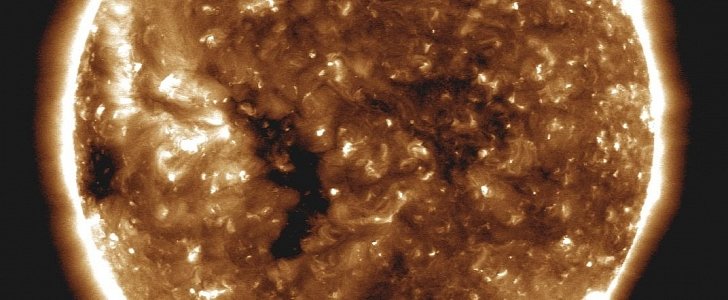In August 2018, NASA launched a daring mission to study the Sun. Conducted with the help of the fastest spacecraft in history, the mission put human-made instruments on a solar orbit that is closer than that of Mercury. And now the first results are in.
After it finished looking through the many GBs of data sent back by the Parker Solar Probe over the past year, the space agency published this week its first findings in four separate reports, each detailing never-before known or never confirmed things about the Sun.
On average, the solar probe scanned the Sun and its surroundings from a distance of 15 million miles (24 million km), less than half the distance at which the closest planet, Mercury, spins around the star.
From this vantage point, the probe was able to observe things like solar wind, dust particles, and magnetic fields in detail never before possible.
First, we now have a better understanding on how solar wind is formed and behaves at various distances from the point of origin. We also found out that its rotating motion is much more pronounced than believed when closer to the Sun, a thing we don't get to see because by the time it reaches Earth, wind is traveling in almost straight lines.
Also, we now know that the dust particles observed a while back by Parker will be all but absent close to the star, as they would be heated and transformed into gas. NASA now expects to find a dust-free zone as a result of this at 2-3 million miles from the Sun. This distance would be reached by the probe in September 2020.
Most intriguingly, so-called events were found near the Sun, most of which are so small they cannot possibly be detected from Earth. Among them, a “rare type of particle burst with a particularly high ratio of heavier elements."
All this new gained insight and much more will be used by NASA to determine how best to protect astronauts and hardware once true space exploration efforts begin next decade. For scientists, the knowledge is invaluable to better understand how stars are made and how they die, and to learn to predict space weather.
You can have a more detailed look at the Parker findings by following this link.
On average, the solar probe scanned the Sun and its surroundings from a distance of 15 million miles (24 million km), less than half the distance at which the closest planet, Mercury, spins around the star.
From this vantage point, the probe was able to observe things like solar wind, dust particles, and magnetic fields in detail never before possible.
First, we now have a better understanding on how solar wind is formed and behaves at various distances from the point of origin. We also found out that its rotating motion is much more pronounced than believed when closer to the Sun, a thing we don't get to see because by the time it reaches Earth, wind is traveling in almost straight lines.
Also, we now know that the dust particles observed a while back by Parker will be all but absent close to the star, as they would be heated and transformed into gas. NASA now expects to find a dust-free zone as a result of this at 2-3 million miles from the Sun. This distance would be reached by the probe in September 2020.
Most intriguingly, so-called events were found near the Sun, most of which are so small they cannot possibly be detected from Earth. Among them, a “rare type of particle burst with a particularly high ratio of heavier elements."
All this new gained insight and much more will be used by NASA to determine how best to protect astronauts and hardware once true space exploration efforts begin next decade. For scientists, the knowledge is invaluable to better understand how stars are made and how they die, and to learn to predict space weather.
You can have a more detailed look at the Parker findings by following this link.

